The canyons and gorges of Texas evoke a striking tapestry of colors that shift with the sun’s daily journey across the sky. These landscapes feature flowing rivers, cascading waterfalls, and vibrant rock walls adorned in shades of green.
Our eyes dance at the brilliant yellows, reds, oranges, pinks, purples, greens, and browns that transform the appearance of these natural wonders. Texas canyons beckon explorers, showcasing some of the most iconic geological formations in the Northern Hemisphere and invite adventure and discovery at every turn.
The following notable Texas canyons offer awe-inspiring and impressive outdoor experiences and activities.
Eagle Nest Canyon (Mile Canyon) in Langtry, Texas
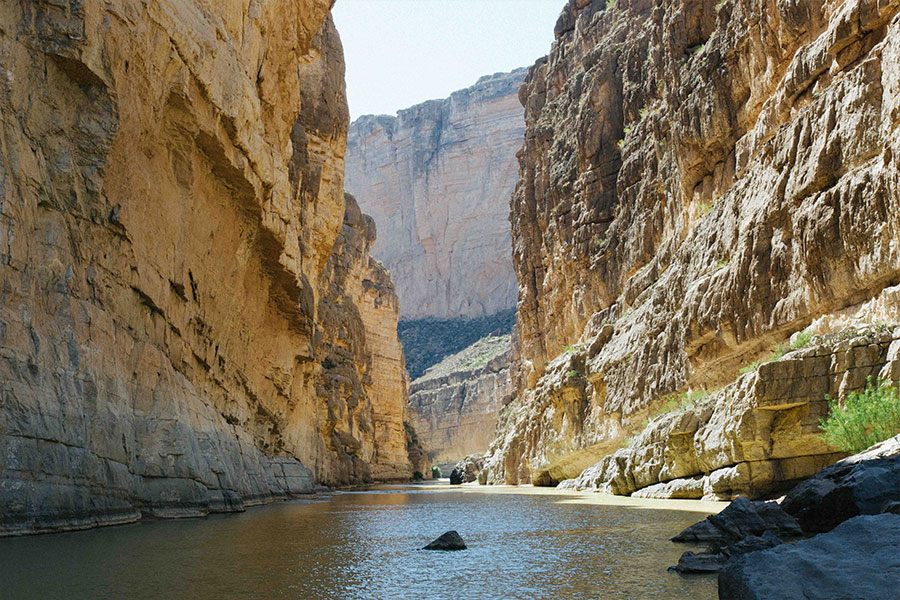
The story goes that the powers that be named Eagle Nest Canyon, one-mile long, after a nesting pair of golden eagles observed nearby. The canyon was home to many archaeological and geological expeditions during the 1900s that explored Native American’s natural shelters from 13,500 years ago.
Boquillas Canyon in Big Bend National Park
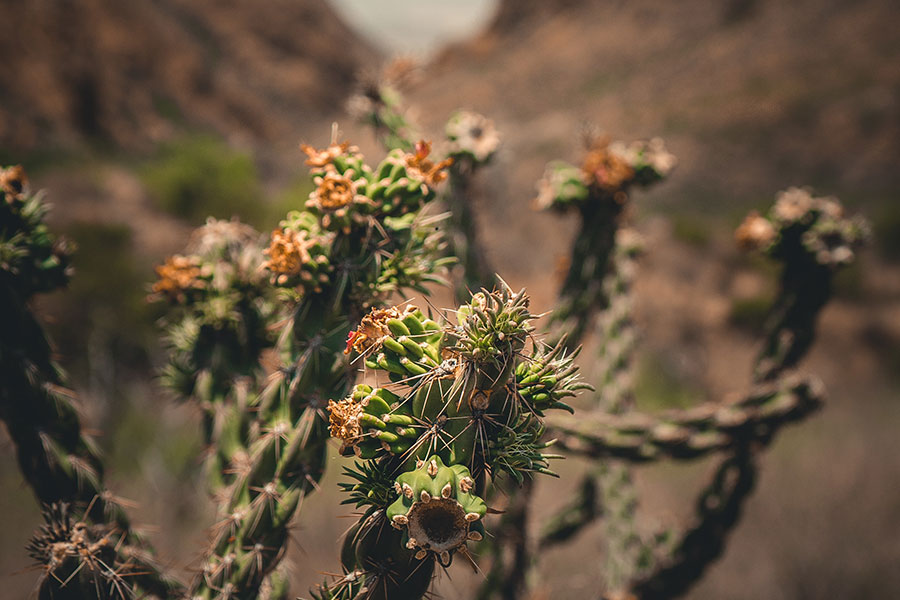
Big Bend National Park holds Boquillas Canyon in its heart. It is the longest and deepest canyon in Big Bend National Park. The vertical relief from nearby Pico del Carmen rises 7,000 feet over the Rio Grande River. The hike to the canyon entrance is 1.4 miles. Boquillas Canyon stretches 33 miles. See it best by an overnight rafting or kayaking trip.
Palo Duro Canyon in Canyon, Texas
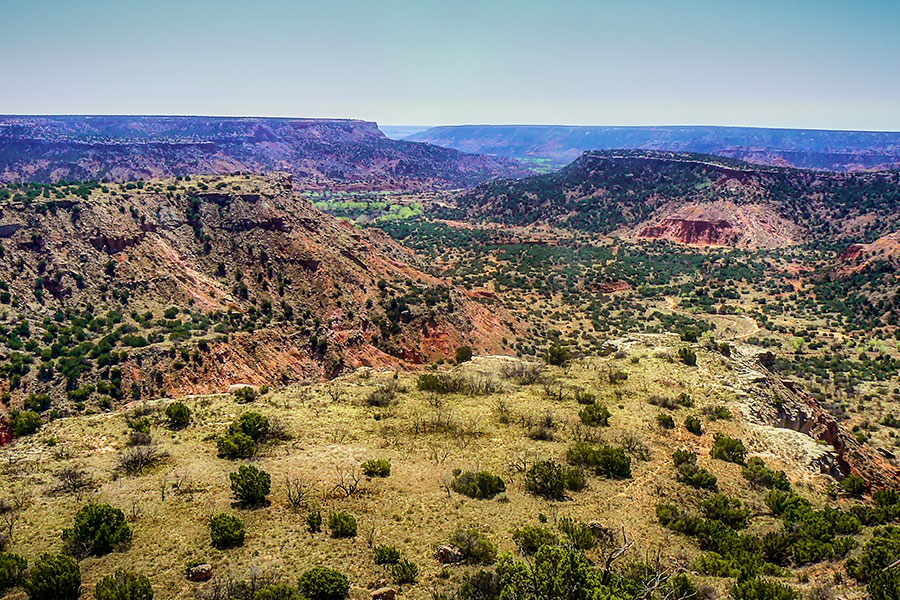
Texans call Palo Duro Canyon “The Grand Canyon of Texas”. It spans 120-miles, is over 800 feet deep, and reaches a width of 20 miles. Palo Duro Canyon is the second only to the Grand Canyon as the largest canyon in the United States!
Palo Duro Canyon is 120 miles long, as much as 20 miles wide, and has a maximum depth of over 800 feet. Its beautiful and distinct scenery provides excellent camping, a diverse variety of biking and hiking trails, and abundant wildlife.
Read our Review of Palo Duro Canyon to learn more about this iconic Texas canyon.
Blanco Canyon in Mount Blanco
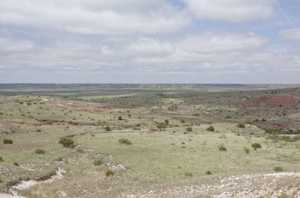
Rivers via evolution carved several canyons into the east face of the Llano Estacado, Blanco Canyon, Palo Duro Canyon, Tule Canyon, and Yellow House Canyon. Blanco Canyon runs for 34 miles, gradually widening from its beginning to 10 miles across at its mouth. It deepens from 50 feet to 300 feet and eventually to 500 feet.
Canyon Lake Gorge in Canyon Lake, Texas
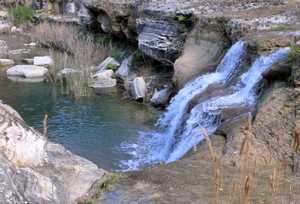
When the Guadalupe River flooded and caused the water to flow out of Canyon Lake, it formed the mile-long Canyon Lake Gorge. The Canyon Lake Gorge exposed fossils over 100 million years old and dinosaur tracks in the mud. To explore its designated hiking trail, the U.S. Army Corps of Engineers requires visitors to use the services of an approved tour guide.
Caprock Canyon in Quitaque, Texas
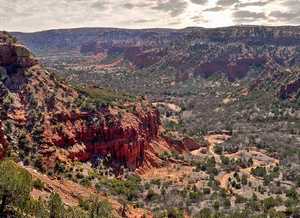
Peaceful Caprock Canyon State Park & Trailway attracts visitors with 90 miles of hiking, mountain biking trails, and equestrian trails. Its trails range from easy to strenuous and challenging. Caprock Canyon and the park provide plenty of free roaming bison, deer, prairie dogs, and roadrunners, along with outstanding scenery. Nearby Lake Theo offers refreshing swimming, no-wake boating, and fishing.
McKittrick Canyon in Guadalupe Mountains National Park
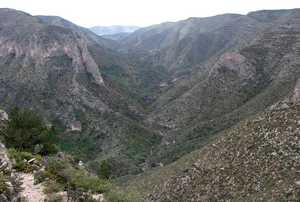
This scenic canyon within the Guadalupe Mountains National Park lies in west Texas. McKittrick Canyon boasts beautiful foliage sporting deep browns, brilliant reds, subtle yellows, blacktail rattlers, prickly pear cacti, steep canyon walls, and crystal clear blue skies. A variety of trails from easy to strenuous, with over 2,000 feet in elevation gain, leads visitors to striking vistas and canyon floors.
Santa Elena Canyon in Big Bend National Park
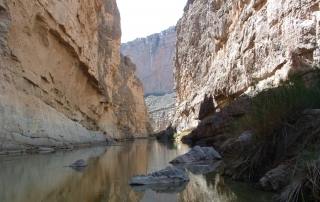
The Terlingua fault created the most impressive canyon in the Big Bend National Park, the Santa Elena Canyon. The Rio Grande River flows through its narrow passes with sheer cliffs that rise 1,500 feet above the river. Portaging a canoe or kayak along a short hiking trail into the entrance of the Santa Elena Canyon and launching it is the best way to view the grandeur of Santa Elena Canyon.
You can read about it in our article on Rafting Trip Through Santa Elena Canyon.
Palo Duro Canyon FAQ: Highlights of Palo Duro Canyon
What Is Special About Palo Duro Canyon?
Let us count the stars in the night skies at Palo Duro Canyon. We marvel, especially if we have night vision binoculars that our U.S. military uses, that shows stars a million miles away in Palo Duro Canyon. The Clovis and Folsom peoples inhabited this canyon for approximately 12,000 years.
The Apache, Comanche, and Kiowa lived, camped, and hunted in the Palo Duro region when did the Apache, Comanche, and Kiowa live in the Palo Duro Canyon. The canyon is home to a cornucopia of wildlife and primarily the threatened Texas horned lizard, bobcats, coyotes, Palo Duro mouse, roadrunners. white-tailed and mule deer, and wild turkeys plus the State Longhorn Herd at the Palo Duro Canyon State Park.
Evolution deposited four geological layers in Palo Duro Canyon over a period of approximately 250 million years, from the Permian Period through the Triassic and Jurassic periods. Erosion shaped this canyon mainly from the action of the Prairie Dog Town Fork of the Red River around one million years ago.
Palo Duro Canyon spans 120 miles with a width of 20 miles and a depth of up to 800 feet. The canyon’s walls are made up of four geologic layers that are 250 million years old. Throughout the park, visitors can bike, camp, hike, take humvee tours, ride horses, and stargaze.
Can You Just Drive Through Palo Duro Canyon?
The park has paved 16-miles of road to drive on. The picturesque drive takes visitors to the floor of the canyon. When summer temperatures range from the 90s to 115 degrees, visitors choose activities in the morning and evening hours.
How Long Does it Take To Drive the Loop at Palo Duro Canyon?
Park officials recommend that it takes a few hours to drive the loop, but they say it can take as little as 45 minutes.
Can You See the Milky Way from Palo Duro Canyon?
Yes, you can see the Milky Way at Palo Duro Canyon on a clear night when the moon is new. The skies over this canyon offer amazing stargazing opportunities. The nearby Amarillo lights interfere, so it is not designated as a “Dark Sky Park”. The Milky Way is especially visible above the iconic Lighthouse rock formation when the moon is new.
What Event Happened at Palo Duro Canyon?
The Battle of Palo Duro Canyon took place on Sept. 28, 1874. The 4th U.S. Cavalry led by Colonel Ranald S. Mackenzie launched a surprise attack at dawn on camps of Comanches, Kiowas, and Cheyennes. Ranald Slidell Mackenzie acquired the moniker of Bad Hand. He was wounded at Bull Run, Gettysburg, Jerusalem Plank Road, and lost two fingers during the 292-day Siege of Petersburg.
Are There Any Slot Canyons in Texas?
Yes, Texas has slot canyons, including those in Palo Duro Canyon State Park and Big Bend National Park. A slot canyon is a narrow, deep canyon carved into soft rock by water, wind, and sediment over millions of years. Palo Duro Canyon State Park contains hidden slot canyons, including Utah Slots and Red Canyon.
Does your passion lead you to spelunking? Check out this page of Texas Caves.